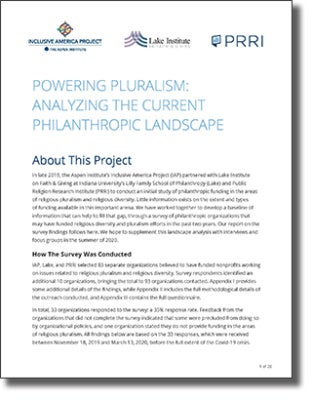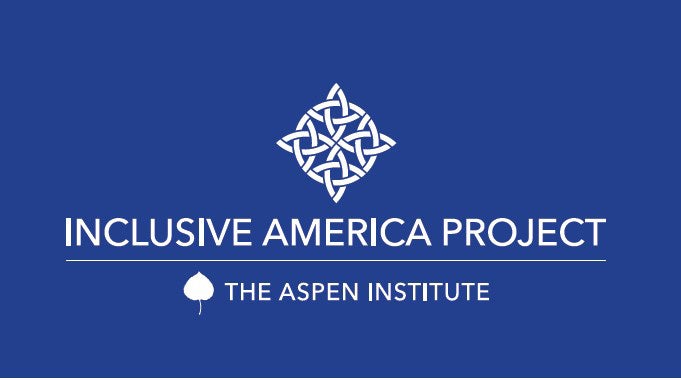Powering Pluralism: Analyzing the Current Philanthropic Landscape
The Religion & Society Program is pleased to release, in partnership with Lake Institute on Faith & Giving (LAKE) at Indiana University’s Lilly Family School of Philanthropy and Public Religion Research Institute (PRRI), findings from our landscape analysis of funding efforts in religious pluralism entitled “Powering Pluralism: Analyzing the Current Philanthropic Landscape.”
America is both one of the most devout and most religiously diverse countries in the world. Its diverse religious communities are the wellspring of some 384,000 congregations and 228,000 faith-based nonprofits*. These nonprofits and many of the congregations work in every imaginable prosocial field for the benefit of their neighbors. They register voters, work to prevent hate speech and hate crimes, run food banks and homeless shelters, and provide countless other benefits to the civic health of our country.
As Robert Putnam has argued, America’s communities of faith are its strongest source of social capital – a sort of fabric that holds us together as a nation – through this prosocial work and civic engagement. So, all those who are interested in advancing prosocial goals also have an important stake in the fields of religious pluralism and religious diversity.
Yet, there is currently little information on the extent and types of funding available in this critical arena. We need more research to better understand the types of funding available in areas of religious pluralism and religious diversity. This landscape analysis was a step in that direction, finding that only around 30 million is invested into the field annually, the greatest giving is in mono-faith action, and much more. These two findings alone suggest opportunity for growth and provide valuable insight to make that growth a reality.
“Powering Pluralism: Analyzing the Current Philanthropic Landscape” outlines important findings in the space of philanthropic funding into areas of religious pluralism and diversity, provides an entry point for funders into this space, and offers opportunities for future research and engagement. If you would like more information or to get involved with the Inclusive America Project’s Religious Pluralism Funder’s Circle, which builds the field of religious pluralism by gathering funders together with opportunities for connection, learning, and collective action, please reach out to us at religionandsociety@aspeninstitute.org.
*Fulton, Brad R. 2020. “Religious organizations: Crosscutting the nonprofit sector.” in The nonprofit sector: A research handbook, 3rd edition, edited by Walter W. Powell and Patricia Bromley. Stanford: Stanford University Press.
Share
Tweet America’s diverse religious communities are the wellspring of some 228,000 faith-based nonprofits! Learn more about the growing philanthropic field that supports them with this #PoweringPluralism report from @AspenReligion, @PRRIpoll, and @LakeInstitute: https://bit.ly/2N2Ub3H
Tweet Want a deeper understanding of the field of religious pluralism and diversity? Read our #PoweringPluralism report from @AspenReligion, @PRRIpoll, and @LakeInstitute. https://bit.ly/2N2Ub3H
Tweet This report shows that the interests of those who fund in the field of religious pluralism and diversity are more closely tied together than one may think. Read @AspenReligion’s report on #PoweringPluralism with @PRRIpoll and @LakeInstitute to find out more: https://bit.ly/2N2Ub3H
Tweet Multi-faith programs are the most popular among funders who give to religious pluralism, YET dollar amounts in these areas are small. Curious to learn more? Read @AspenReligion’s report on #PoweringPluralism with @PRRIpoll and @LakeInstitute: https://bit.ly/2N2Ub3H

